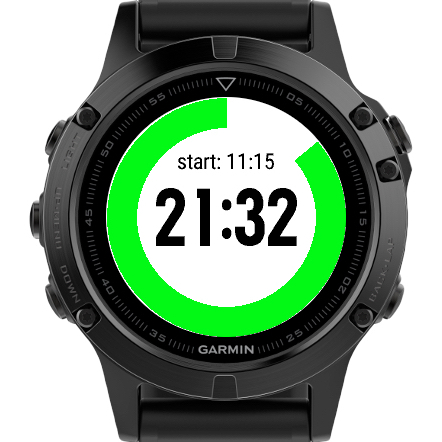Why measure performance?
There is an old saying: “If you can’t measure it, you can’t manage it”. Some people don’t agree with this (see article). I tend to be caucious when using this saying - not everything is worth measuring. You also need to be careful to not to draw too far-fetched conclusions from what is.
I find it very valuable to have a metric that tells me more or less how efficient my day was. If I can easily measure my own performance then I know what influences it. When you know that, you can increase your performance by just shifting some time from the inefficient days to the efficient ones. Or you can learn how your habbits influence your preformance and change them for the better.
The How
There are a lot of ways you could measure performance, but sadly most of them don’t make too much sense. Measuring the outcome of your work is sure useful, but often times it’s more long-term and won’t tell you much about a given day. As a programmer you could measure:
- time spent working
- number of lines or commits created
- number of solved tickets
- number of storrypoints closed
- etc
And most of the time they’re useless because you can spend 8 hours on slacking or produce a lot within one hour. Some lines take seconds to write, some take hours. Tickets vary from very simple to long undertakings and their estimates are usually very very inaccurate.
Pomdodoro to the rescue
Pomodoro is a technique that can be applied to work or learning and it’s very simple in principle. You can read about it on wikipedia, but in brief the rules are:
- pick a task to work on
- start a timer and work for 25 minutes
- take a 5 minute break / after each 4 cycles take a 15-30min break
- repeat
The only requisite you need is a simple timer - it can be a kitchen timer or a watch or an app - whatever works for you.
Since it’s just a simple framework there’s definitively more than one way of implementing it into ones workflow. It takes some effort at first, but for me it works wonders! I learned that some of the principles of Pomodoro may work well for you and some may not. For me restricting the breaks to 5mins didn’t work well because if I was too tired and forced myself to start a pomodoro, I wasn’t 100% focused. I decided I’d rather have a longer break, but make that next pomodoro efficient. My interpretation of Pomodoro can be described by these 4 rules:
- work 25 minutes
- focus on work ONLY during this time
- after the timer rings, leave your desk ASAP
- take a walk to the kitchen, relax a bit and decide when you feel like coming back to work
It is crucial to be brutally honest with yourself and put 100% of your focus on work during a pomodoro, that’s why I never share the number of pomodoros. I only use this information for my own purpose. These rules alone give me a set of benefits:
- measuring my performance becomes very simple - just count the finished pomodoros! (since every pomodoro is similarly efficient)
- I don’t end up slacking and pretending to work (because work and rest time are clearly divided)
- I get to have a real break away from my computer to stretch my legs
- forcing myself to finish after 25min prevents me from getting stuck on a difficult task
There are some tasks thay play well with the technique, there are some that don’t. Like meetings and phone calls aren’t easy to force into fixed intervals. But I think that’s fine. Being able to observe that having too much meetings limits the number of pomodoros you can fit within a day is valuable as well.
WorkTimeLogger - a simple interval timer for Garmin watches
I was trying to find a simple and user-friendly pomodoro timer for a long time, but for some reasons every one of them was either too complex or didn’t work as I expected. When I bought a Garmin Fenix 3 watch, I decided to write one myself.
I came up with WorkTimeLogger - a very simple interval timer. It’s supposed to just measure one interval in a simplest way possible. You can download it in the Garmin app store.

WorkTimeLogger - interval timer
One thing I could never figure out was how to force myself to get up from my desk after the interval finishes. There are desktop apps that open up a window in the middle of the screen and don’t allow you to close it until the break ends. I’ve seen people put their editor in the tiny gap between the window and screen edge and work that way through the break because they were too excited to pause.
Since the watch is capable of measuring steps, in my timer, I made it harass the user with vibrations until they stand up and make 15 steps. I’m pretty amazed by the fact that it really does make me take a break.
One of the ideas I’m testing right now is logging all the intervals to an external service for performance stats. The best part is that there’s no additinal cost to doing that for the user!
If you have a Garmin watch, take a look at the app, let me know what you think! If not, that’s ok - get a kitchen timer and have a try at the Pomodoro technique for a day or two! I’m sure you will find something valuable in it for yourself.
Mar 30, 2017 update: WorkTimeLogger now sends your stats to www.worktimelogger.com - give it a try!